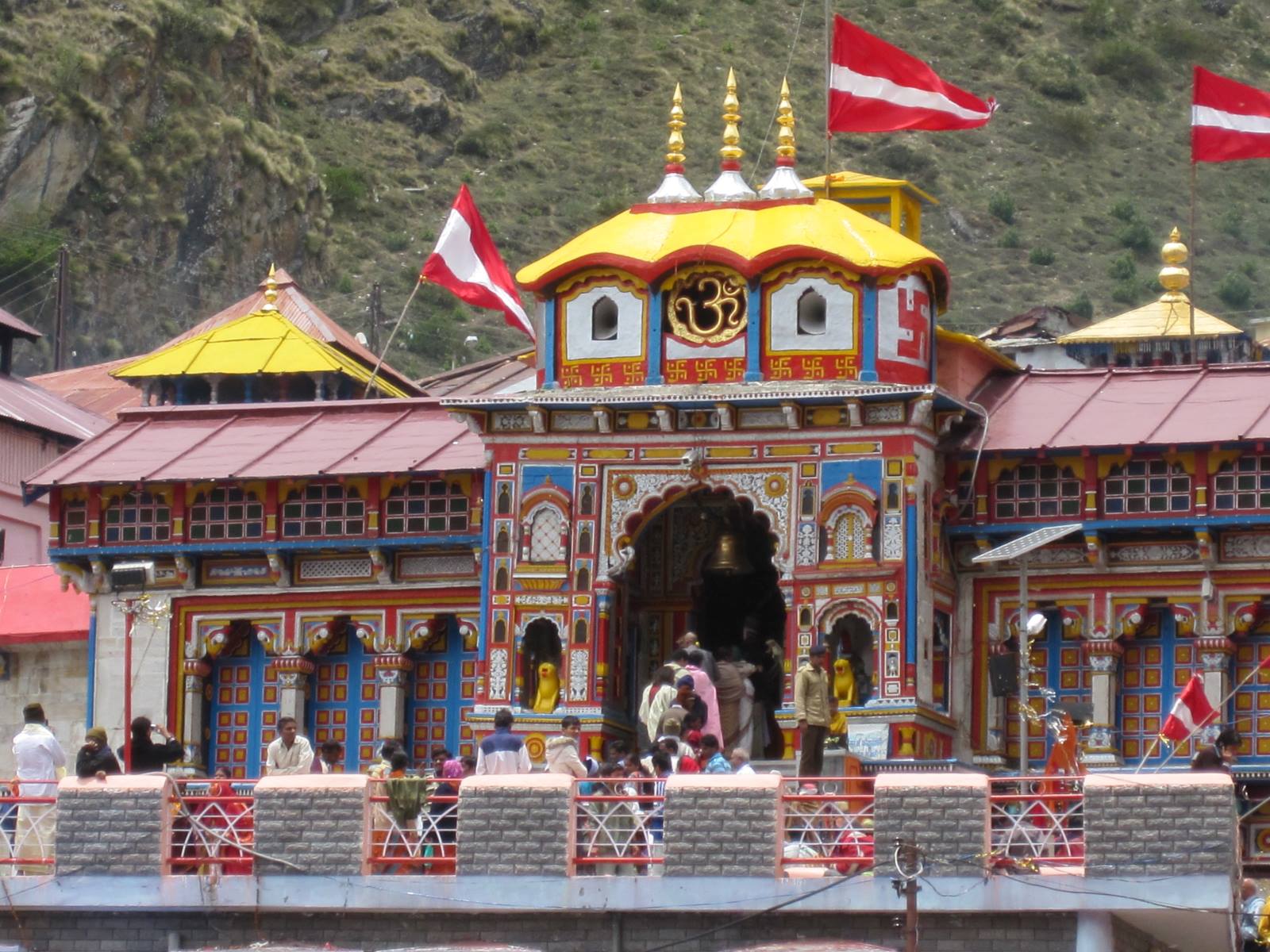
The Badrinath Temple is one of the most revered and iconic landmarks in India. Located in the state of Uttarakhand, nestled in the breathtaking Himalayan range, this ancient temple holds immense religious significance for Hindus and attracts millions of pilgrims and tourists every year. The temple is dedicated to Lord Badrinath, a form of Lord Vishnu, and is part of the Char Dham Yatra, which is considered one of the holiest pilgrimages in Hinduism. With its rich history, architectural splendor, and awe-inspiring natural surroundings, there are numerous fascinating facts about the Badrinath Temple that make it truly astounding. From its mythical origins to its intriguing rituals, this article will delve into twelve remarkable facts that showcase the unique and enigmatic aspects of this divine pilgrimage site. So, let’s embark on a journey of exploration and discovery as we unveil the wonders of the Badrinath Temple.
Key Takeaways:
- Badrinath Temple is an ancient Hindu shrine dedicated to Lord Vishnu, nestled in the Himalayas. It boasts a sacred river, hot springs, and stunning views, making it a must-visit pilgrimage site.
- The temple’s rich history, legends, and natural beauty, including the Neelkanth Peak and Charan Paduka, offer a spiritual and awe-inspiring experience for visitors seeking solace in the Himalayas.
A Sacred Abode of Lord Vishnu
The Badrinath Temple is a revered Hindu shrine located in the Chamoli district of Uttarakhand in India. It is one of the Char Dham pilgrimages and is dedicated to Lord Vishnu, specifically in his form of Badrinarayan.
One of the Oldest Temples
The Badrinath Temple is believed to be one of the oldest temples in India, with its history dating back thousands of years. It has been a site of pilgrimage and devotion for centuries, attracting millions of devotees every year.
Picturesque Himalayan Location
Perched at an elevation of 3,415 meters (11,204 feet) amidst the picturesque Himalayan ranges, the Badrinath Temple offers breathtaking views of snow-capped peaks and lush greenery.
The Sacred Alaknanda River
The temple is situated on the banks of the Alaknanda River, one of the major tributaries of the holy River Ganges. The river adds to the spiritual ambiance of the temple and is considered extremely pure.
Murti of the Lord Made of Shaligram
The presiding deity in the temple is a sacred black stone idol of Lord Badrinarayan, which is made of Shaligram, a fossilized shell considered auspicious in Hinduism.
The Winter Abode
The Badrinath Temple remains open for only six months every year, from April to November. During the harsh winter months, the idol of Lord Vishnu is brought down and worshipped at the nearby village of Joshimath.
The Narad Kund
The temple complex features a hot water spring called Narad Kund, which is believed to have medicinal properties. Devotees take a dip in the kund before entering the temple as a purification ritual.
The Tapt Kund
Adjacent to the Narad Kund is the Tapt Kund, a natural thermal spring that is known for its hot water. It is believed to have healing properties and is used for various rituals and religious ceremonies.
The Neelkanth Peak
The magnificent Neelkanth Peak serves as a majestic backdrop to the Badrinath Temple. It is believed to be the place where Lord Shiva consumed the poison that emerged during the churning of the cosmic ocean.
The Charan Paduka
Located at a height of 3,380 meters (11,090 feet), the Charan Paduka is a sacred rock that bears the footprints of Lord Vishnu. It is believed to be the spot where Lord Vishnu first set foot upon coming to Earth.
The Vyas Gufa
A short distance from the Badrinath Temple, there is a cave called Vyas Gufa. According to legend, it is believed to be the place where the sage Ved Vyasa composed the epic Mahabharata.
The Festival of Mata Murti Ka Mela
Every year, in the month of September, the Mata Murti Ka Mela is celebrated near Badrinath Temple. It honors Mata Murti, the mother of Lord Badrinarayan, and attracts a large number of devotees.
These 12 astounding facts about Badrinath Temple provide a glimpse into the rich history, cultural significance, and natural beauty that surrounds this sacred Hindu shrine. From its ancient origins and breathtaking location to the rituals and legends associated with it, the Badrinath Temple holds a special place in the hearts of devotees and visitors alike.
Plan a visit to the Badrinath Temple to experience the divine aura and immerse yourself in the spirituality of this remarkable pilgrimage site. With its awe-inspiring surroundings and profound religious significance, it is a must-visit destination for anyone seeking spiritual solace amidst the magnificent Himalayas.
Conclusion
In conclusion, the Badrinath Temple is a truly remarkable landmark with a rich history and cultural significance. Its stunning architecture, divine atmosphere, and spiritual aura make it a must-visit destination for pilgrims and tourists alike. The temple’s location amidst the scenic beauty of the Himalayas adds to its allure and charm.We hope that this article has provided you with a deeper understanding of the Badrinath Temple and its significance. Whether you are a religious person seeking spiritual solace or a history enthusiast intrigued by ancient landmarks, visiting the Badrinath Temple will undoubtedly be a memorable and enriching experience.
FAQs
1. Can anyone visit the Badrinath Temple?
Yes, the Badrinath Temple is open to all visitors irrespective of their religious beliefs. However, certain dress codes and etiquette need to be followed while visiting the temple.
2. Is there an entry fee to visit the Badrinath Temple?
No, there is no entry fee to visit the Badrinath Temple. However, donations and offerings are welcome for the temple’s maintenance and upkeep.
3. Can I take photographs inside the temple?
No, photography is strictly prohibited inside the temple premises. However, you can capture the temple’s exterior and the breathtaking surroundings.
4. Are there any accommodations available near the temple?
Yes, there are several guesthouses, hotels, and ashrams available in close proximity to the Badrinath Temple where visitors can stay during their visit.
5. Is there a specific time to visit the temple?
The Badrinath Temple is generally open from April to November, and the best time to visit is during the summer and autumn months when the weather is pleasant.
6. Can I perform any rituals or ceremonies at the temple?
Yes, visitors have the opportunity to perform various rituals and ceremonies at the Badrinath Temple under the guidance of the temple priests.
7. Is there any significance attached to the Badrinath Temple in Hindu mythology?
Yes, the Badrinath Temple holds immense significance in Hindu mythology as it is one of the Char Dham pilgrimage sites and is believed to be the abode of Lord Vishnu.
8. Are there any nearby attractions to explore along with the Badrinath Temple?
Yes, there are several other attractions near the Badrinath Temple, such as Mana Village, Vasudhara Falls, and Tapt Kund, which can be explored during your visit.
If you're fascinated by the rich tapestry of Hindu pilgrimage sites, don't miss our article on the Maha Kumbh Mela, a massive gathering that attracts millions. For those captivated by Uttarakhand's spiritual wonders, check out the mesmerizing facts about Mukteshwar Temple. And if you're drawn to the majesty of the Garhwal Himalayas, our piece on Tungnath's unbelievable secrets will leave you spellbound. Each destination holds a unique place in India's religious and cultural landscape, promising to transport you to a realm of profound beauty and devotion.
Was this page helpful?
Our commitment to delivering trustworthy and engaging content is at the heart of what we do. Each fact on our site is contributed by real users like you, bringing a wealth of diverse insights and information. To ensure the highest standards of accuracy and reliability, our dedicated editors meticulously review each submission. This process guarantees that the facts we share are not only fascinating but also credible. Trust in our commitment to quality and authenticity as you explore and learn with us.


